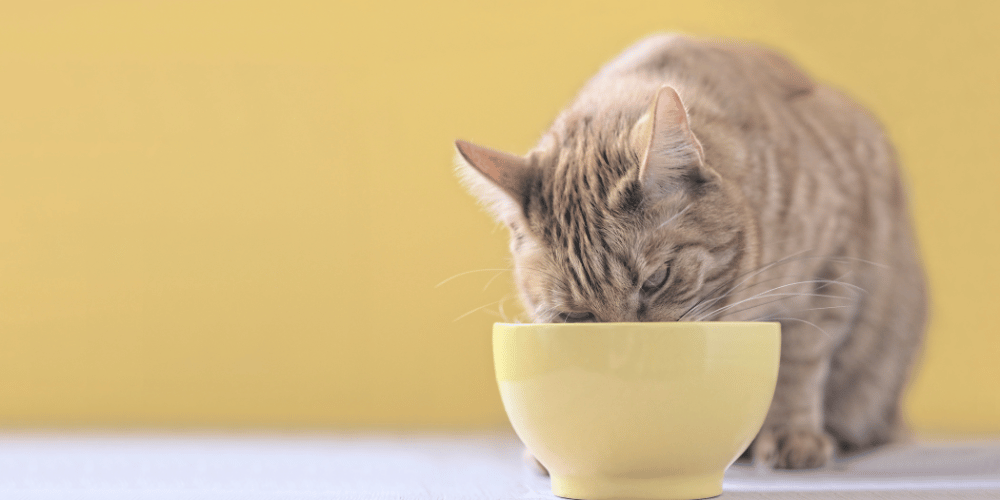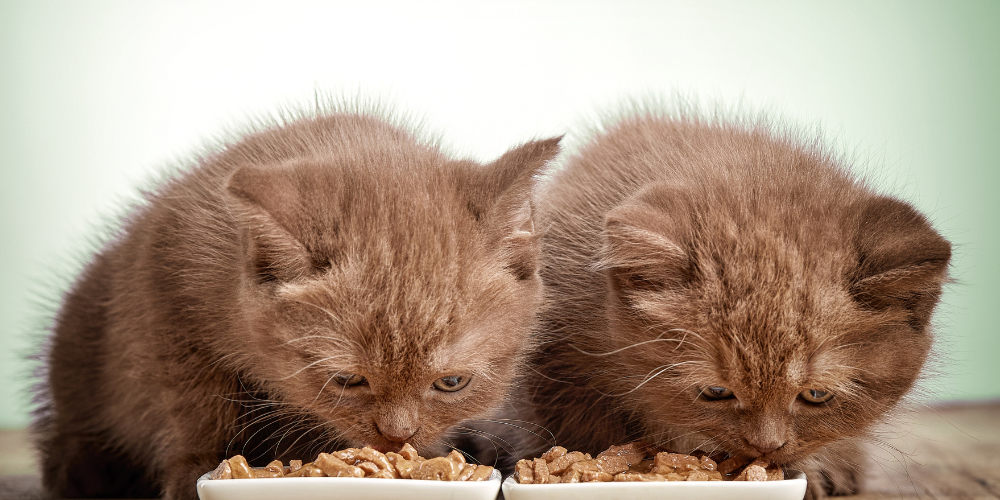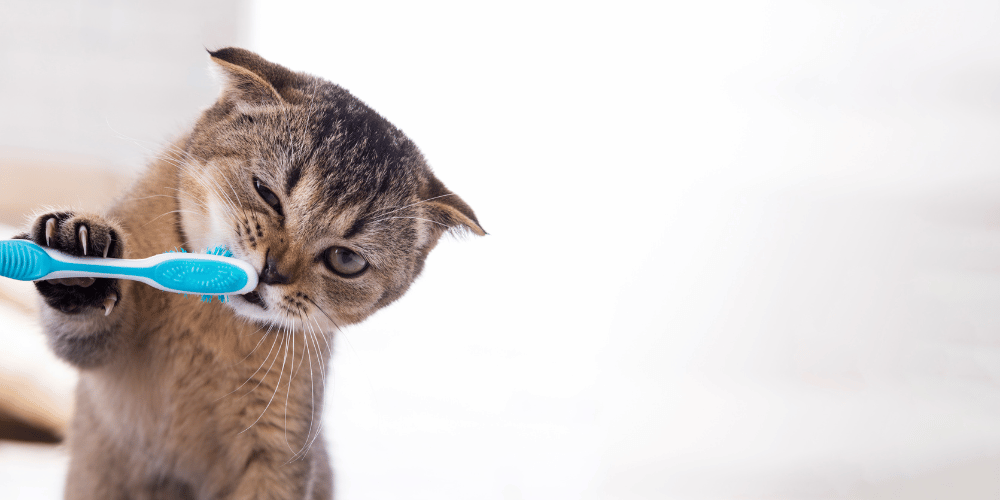
Choosing a food for your cat can be a daunting experience. You click on the link to cat food on a website and hundreds of results appear. Maybe you've found yourself standing in the pet food aisle at your local supermarket thinking to yourself “I don’t remember there being this many options last time!”. Perhaps you have dared asked the question in a Facebook group – “what is the best food for cats?” and been swamped with responses, all offering different advice and leaving you more confused than before you asked. This article aims to clear up some of the confusion around cat food and we hope it will empower you to make an informed choice about the best food for your cat.
Where to Begin
Your vet is always the best place to start with your search for the right food for your cat. Ask your vet to suggest some options for you or ask them what brands they prefer. They might also have brochures for you to read or even samples for your cat to try. The main thing you will want to ask your vet is if they think your cat would benefit from a specialty or veterinarian prescription diet. They can also advise on a healthy weight range for your cat so you can make any necessary adjustments to ensure you are feeding them the right amount.
Things to Consider
There are several things to consider when deciding what is the right food for your cat. Their life stage, age, breed or activity level, any health issues and your budget should all factor into your decision. There are also several key ingredients that must be included in your cats food, which if not included, can lead to your cat becoming very sick.

Life Stage/Age
As you have probably noticed if you ever had a kitten, they do a lot of growing in a very short amount of time! Kittens need to fuel that growth with extra calories and nutrients and ordinary adult cat food won't contain the right balance for growing bodies. You should always feed kittens a kitten-specific food to ensure they will have enough energy to sustain their growth.
View our full range of food suitable for kittens here.
Senior cats often become less active than they used to be in their old age. To avoid putting on extra weight, senior cat food will often have less calories than standard adult cat food. They are a great option to simply feeding your cat less food as your cat may have grown accustomed to eating a certain amount and might be quite upset with you if they suddenly think they are being fed less.
View our full range of food suitable for senior cats here..
Pregnant and lactating cats are often fed kitten food to help them grow and sustain their kittens but you can also purchase specialty food to meet their exact nutritional requirements. Pregnant and lactating cats must be fed a more calorie-dense diet and more frequently to ensure they don't experience any weight loss.
We stock the Royal Canin Mother & Babycat kibble which is suitable for pregnant and lactating cats.

Breed or Activity Level
Certain breeds of cats can be more active than others. A Bengal is a cross between a domestic cat and an Asian leopard cat, and they are known for their high energy levels. On the other hand, Ragdolls and Persians are considered to be very placid cats, preferring to spend their time on the couch than climbing the walls like a Bengal.
View our full range of Royal Canin breed specific food for cats here.
More active cats will need extra calories to sustain their high energy levels, while those that are less active are better suited to lower calorie diets to ensure they don’t start packing on the pounds. Cats that are kept exclusively indoor also have lower calorie requirements and many brands make a diet specifically for indoor cats.
View our full range of food for indoor cats here.

Health Conditions
Specialty diets are available from many brands, including Hills and Royal Canin, for a variety of concerns and conditions including digestive troubles, cats that are prone to hairballs, overweight cats, cats with dental issues and cats with urinary problems.
Some products we stock that address these conditions includes:
- Hills Science Diet Sensitive Stomach & Skin cat kibble
- Advance Hairball cat kibble
- Hills Science Diet Hairball Control cat kibble
- Advance Light Cat kibble
- Hills Science Diet Light Cat kibble
- Hills Science Diet Perfect Weight sachets
- Advance Dental Cat kibble
- Hills Science Diet Oral Care cat kibble
- Hill's Science Diet Urinary Hairball Control cat kibble
Prescription or veterinary diets also treat a wide array of conditions, but they must be recommended by a veterinarian before you commence feeding to your cat.
We stock both the Hill's Prescription Diet range and the Royal Canin Veterinary Diet range.

Now that you have considered your cats needs, it is time to take a look at what goes into your cats’ food.
Ingredients
Cats are obligate carnivores. This means that they must eat meat in order to survive and thrive. There are nutrients that their bodies need that can only be sourced through the consumption of animal flesh and as horrible as that might make you feel, your cat’s health should come first. Wild cats that eat prey would consume a diet high in proteins, with moderate amounts of good fats and a minimal amount of carbohydrates. Ideally, your cats’ diet should mimic these proportions in the food they eat.

Skip the Seafood
While your cat may go crazy for tuna or other smelly seafoods, it is not ideal to feed solely seafood as it contains too much fat for their needs, but it can be given to them on the odd occasion as a treat. Cat foods that have a seafood flavour should be checked to ensure they don't contain too much fat and have enough protein.

Essential Inclusions
There are several key vitamins and minerals that cats need for healthy growth that should be included in their food. Taurine is one such essential amino acid that is found only in animal-based proteins and is crucial for the development of a cat’s vision, digestive system, nerves and brain and heart muscle function. Cats also need vitamins A, D and B vitamins, and the minerals calcium, iron and magnesium for optimal health.

Learn to Read the Label
Reading the label on your cats’ food can tell you a lot about their food. The ingredient list includes all ingredients in the product and they are listed in descending order by weight, with the exception of water. Therefore, in an ideal food the first ingredient or two should be a protein source. Also look for the words “complete and balanced” on their food. Some foods are marked as “intended for occasional or supplemental feeding” or as a “treat” or “snack”. Foods that are complete and balanced include all of the essential nutrients your cat needs, while foods intended for occasional or supplemental feeding are missing some of those essential nutrients and should not be fed regularly.

What About Raw?
Raw food diets are becoming increasingly popular for both dogs and cats alike, but they can be tricky to get right and are disastrous if you don't. If you do wish to feed your cat a raw diet, check with a pet nutritionist that the diet is nutritionally complete and balanced before commencing. Pets that have been fed a raw diet that is not nutritionally balanced will develop vitamin and mineral deficiencies which can lead to your cat developing serious health conditions like kidney disease and may even be fatal.
You should also ensure you select human-grade meat, ensure any raw ingredients have been stored and handled correctly and practice good hygiene by washing your hands thoroughly while preparing their food.

Wet vs Dry - What is Best?
The answer as to what is better for your cat, wet or dry, will depend on your cat. If they drink lots of water, a dry kibble food is fine to feed them as they are getting enough hydration from drinking water. A cat that isn’t a fan of drinking from a water bowl might benefit from a diet of wet food which will boost their hydration levels. An older cat that might have lost some teeth to dental disease may prefer a soft, wet food diet as they aren’t required to chew.

Hopefully this article has helped you to choose the right food for your cat. Unfortunately, it isn’t an easy task, but it is an essential one to ensure your cat lives a long and healthy life.

